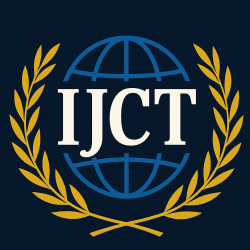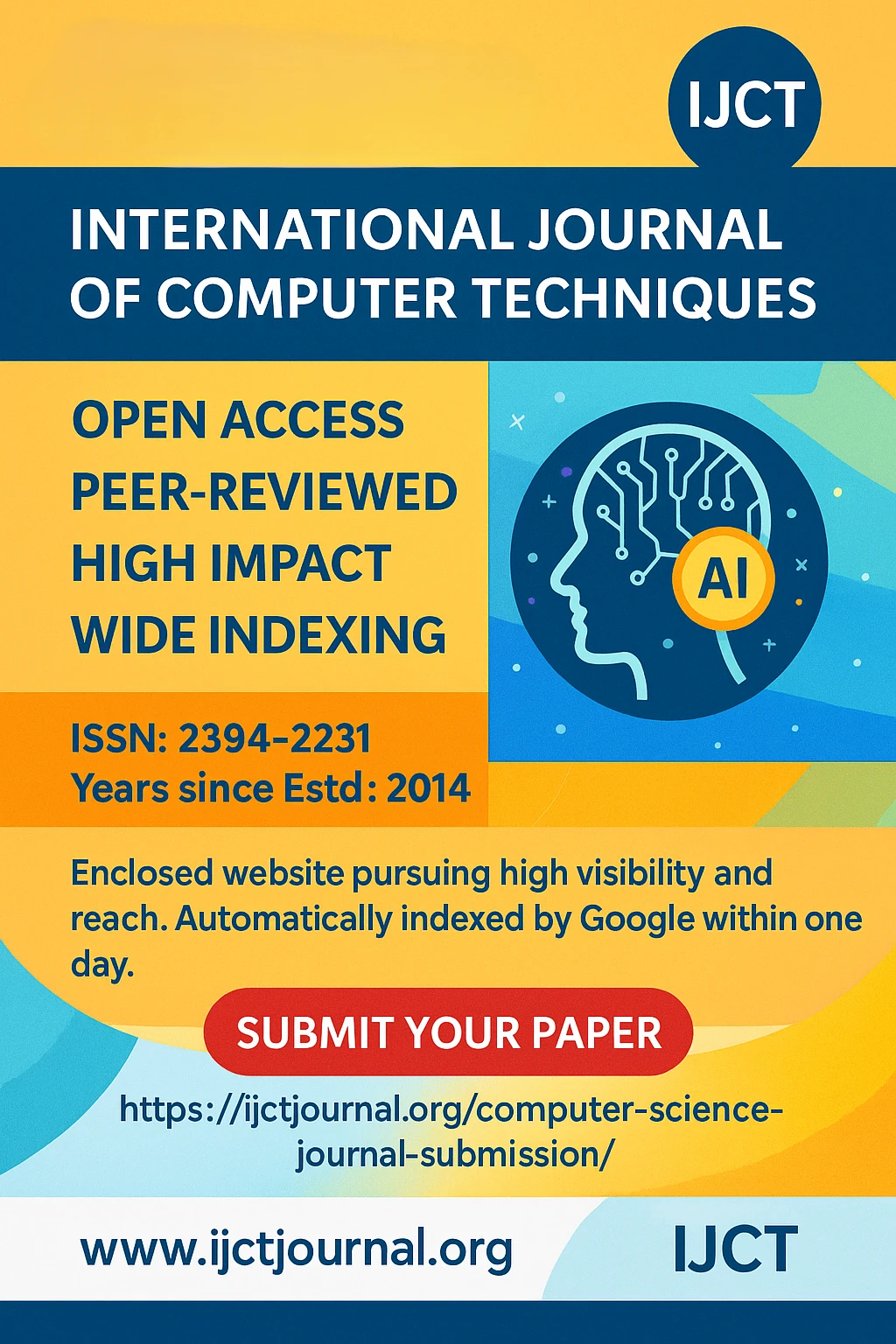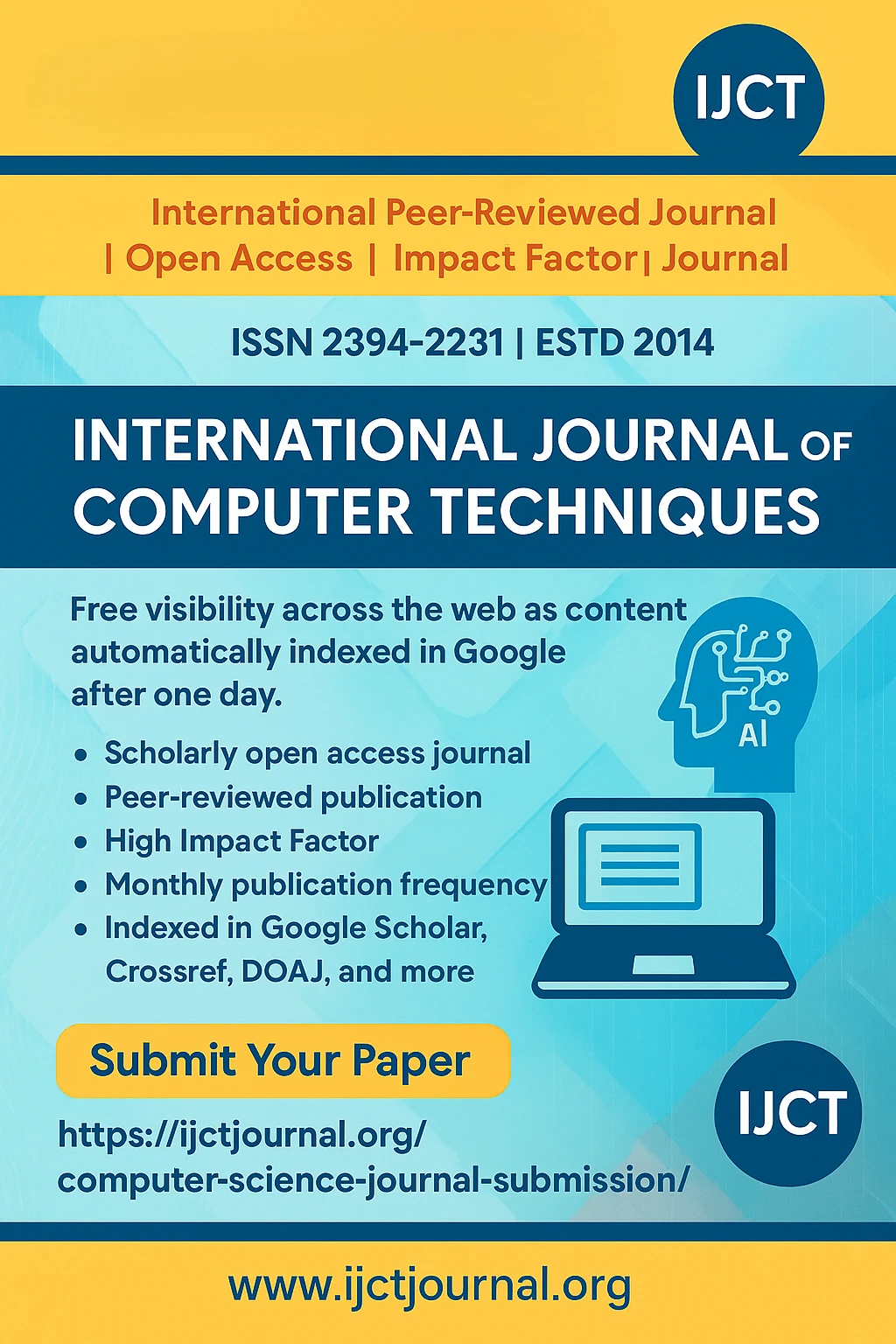
Violations of SOLID Principles in Real-World Libraries: A Case Study on Java Collections | IJCT Volume 12 – Issue 5 | IJCT-V12I5P55

International Journal of Computer Techniques
ISSN 2394-2231
Volume 12, Issue 5 | Published: September – October 2025
Author
Shriram Kalyan Patil , Umakant Shriram Kesare , Dr. Sharda Patil, Ph.D.
Table of Contents
ToggleAbstract
SOLID principles are at the core of object- oriented software design, supporting systems
to work in modularity, extendibility &
maintainability. Nevertheless, most advanced
and common frameworks, like the Java
Collections Framework (JCF), periodically
violate these principles, due to legacy design
choices, backward compatibility issues, and
platform demands. This study examines such
deviations from the JCF model, and finds and
analyzes specific cases (e.g. usage of
inheritance in Stack and Properties classes
and behavioral inconsistency in unmodifiable
collections). Here, we have evaluated how
these violations impact software
maintainability, extensibility, and developer
understanding. It also explores the design and
engineering tradeoffs that contributed to
these deviations and their lasting
consequences for sustainable software
engineering. In this paper, we propose
refactoring strategies and design
recommendations to improve library design
through SOLID principles.
Keywords
^Conclusion
Our results validate that the Java Collections
Framework (JCF), despite developing to a
certain extent and getting popular, contains a
number of shortcomings of the SOLID
principles, in particular the Single
Responsibility Principle (SRP) and the
Liskov Substitution Principle (LSP),so it’s
supporting Hypothesis H1. We found that
these violations occurred in the Stack, Properties, and Collections.unmodifiableList()
classes, in which design integrity is impaired
by improper inheritance, type inconsistency, and behavioral substitution issues
Thus consistent with Hypothesis H2, these
violations have a negative impact on the
maintainability, readability, and long-term
use of the software. For example, misusing
inheritance in Stack and Properties generates
coupling and misunderstanding, and lack of a
coherent behavior in unmodifiable
collections leads to runtime errors and fuzzy
conceptual understanding among developers. In addition, the results support H3 by
demonstrating that backward compatibility
and legacy design are the most common
causes of these violations. Because of the
historical development of the JCF and the
requirement to maintain compatibility with
the previous versions, structural
reorganization was not possible, and
functional and design issues were
compromise-based. Thirdly, reinforcing the hypothesis H4, the
research demonstrates the educational
significance of such design weaknesses as the
JCF also serves to teach concepts associated
with object oriented programming. Misconceptions about good design
techniques can arise from such infringements
if they aren’t adequately considered. Educators and curriculum developers need to
remind students to reference these exceptions
for the purpose of explaining SOLID as a
strategy, in order to avoid misconception
among students. On the whole, the study emphasizes the need
for regular re-evaluation of existing libraries
like JCF based on changing standards in
software design. Promoting that a
composition rather than an inheritance of
code elements would be adopted, the use of
type-safe abstractions, and the
encouragement of responsible developer
behaviour will enable the next Framework to
incorporate more of the SOLID approach, improving the quality of codes and
instruction in a sound design.
References
• Journal of Systems and Software Volume
220, February 2025, 112254 . • Abid, C., Alizadeh, V., Kessentini, M., do
Nascimento Ferreira, T., Dig, D., 2020. 30
years of software refactoring research: A
systematic literature review. arXiv:
2007.02194. • Ampatzoglou, A., Chatzigeorgiou, A., 2007. Evaluation of object-oriented design patterns
in game development. Information and
Software Technology 49, 445–454. https://doi.org/10.1016/j.infsof.2006.07.003
• Erich Gamma,Richard Helm ,Ralph
Johnson,John Vlissides, 1994. Design Patterns:
Elements of Reusable Object-Oriented
Software. Addison-Wesley Professional. • Martin, R.C., 2000. Design Principles and
Design Patterns 34. • Pillay, N., 2010. Teaching Design Patterns
• Ramasamy, S., Jekese, G., Hwata, C., 2015. Impact of Object-Oriented Design Patterns on
Software Development. International Journal
of Scientific and Engineering Research
Volume 3, 6. • https://www.researchgate.net/publication/2734
51390_SOLID_Principles_in_Software_Archi
tecture_and_Introduction_to_RESM_Concept _in_OOP . • Abid, C., Alizadeh, V., Kessentini, M., do
Nascimento Ferreira, T., Dig, D., 2020. 30
years of software refactoring research: A
systematic literature review. arXiv:
2007.02194. • AlOmar, E.A., AlRubaye, H., Mkaouer, M.W., Ouni, A., Kessentini, 2021. Refactoring
practices in the context of modern code review:
An industrial case study at X erox. In: 2021
IEEE/ACM 43rd International Conference on
Software Engineering: Software Engineering
in Practice. ICS
• AlOmar, E.A., Mkaouer, M.W., Ouni, A., 2024. Behind the intent of extract method
refactoring: A systematic literature review. IEEE Trans. Softw. Eng. 50 (4), 668–694. http://dx.doi.org/10.1109/TSE.2023.3345800. • Bass, L., Clements, P., Kazman, R., 2012. Software Architecture in Practice: Software
Architect Practice_c3. Addison-Wesley. • Becker, C., Chitchyan, R., Duboc, L., Easterbrook, S., Penzenstadler, B., Seyff, N., Venters, C.C., 2015. Sustainability design and
software: The Karlskrona manifesto. In: 2015
IEEE/ACM 37th IEEE International
Conference on Software Engineering. Vol. 2, IEEE, pp. 467–476. • Bennett, K.H., Rajlich, V.T., 2000. Software
maintenance and evolution: a roadmap . In:
Proceedings of the Conference on the Future
of Software Engineering. pp. 73–87. • Bennett, K.H., Ramage, M., Munro, M., 1999. Decision model for the legacy systems. In:
IEE Proceedings-Software. Vol. 146, pp. 153–
159. • Bianchi, A., Caivano, D., Marengo, V., Visaggio, G., 2003. Iterative reengineering of
legacy systems. IEEE Trans. Softw. Eng. 29
(3), 225–241. • Candela, I., Bavota, G., Russo, B., Oliveto, R., 2016. Using cohesion and coupling for
software re-modularization : Is it enough?
ACM Trans. Softw. Eng. Methodol. (TOSEM)
25 (3), 1–28. • Capra, E., Francalanci, C., Merlo, F., 2010. The economics of community open-source
software projects: an empirical analysis of
maintenance effort. Adv. Softw. Eng. 2010. • Chidamber, S., Kemerer, C., 1994. A metrics
suite for object-oriented design. IEEE Trans. Softw. Eng. 20 (6), 476–493. http://dx.doi.org/10.1109/32.295895. Curtis, B., Sappidi, J., Szynkarski, A., 2012. Estimating the size, cost, and type of
technical debt. In: 2012 Third International
Workshop on Managing Technical Debt. MTD, IEEE, pp. 49–53. • Dams, D., Mooij, A., Kramer, P., Rădulescu, A., Vaňhara, J., 2018. Model-based software
restructuring: Lessons from cleaning up COM
interfaces in industrial legacy codes . In: 2018
IEEE 25th International Conference on
Software Analysis, Evolution and
Reengineering. SANER, pp. 552–556. http://dx.doi.org/10.1109/SANER.2018. 8330258. • https://www.digitalocean.com/community/con
ceptual-articles/s-o-l-i-d-the-first-five- principles-of-object-oriented-design
• https://stackoverflow.com/questions/30616660
/which-solid-principles-are-violated
• Java-8 Documentation
https://docs.oracle.com/javase/8/docs/api/java/
util/Properties.html
Journal Covers
IJCT Important Links
© 2025 International Journal of Computer Techniques (IJCT).











